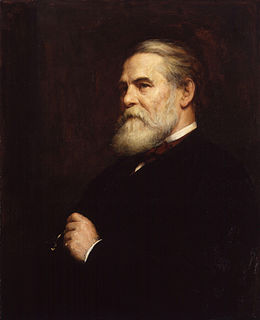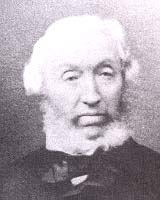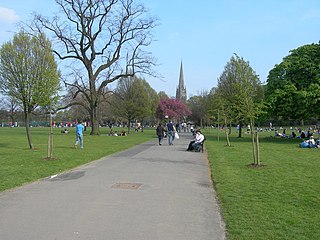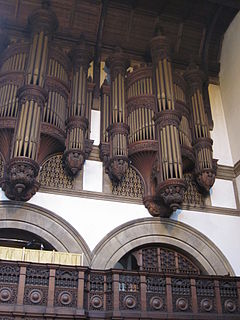Related Research Articles

William Butterfield was a Gothic Revival architect and associated with the Oxford Movement. He is noted for his use of polychromy.

Braunston is a village and civil parish in West Northamptonshire, England, next to the border with Warwickshire. At the 2011 Census, the parish had a population of 1,759. Braunston is situated just off the A45 main road and lies between the towns of Daventry and Rugby.

John Loughborough Pearson was a British Gothic Revival architect renowned for his work on churches and cathedrals. Pearson revived and practised largely the art of vaulting, and acquired in it a proficiency unrivalled in his generation. He worked on at least 210 ecclesiastical buildings in England alone in a career spanning 54 years.

Burgess Park is a public park situated in Camberwell the London Borough of Southwark, and is close to Walworth to the north and Bermondsey to the east. At 56 hectares, it is one of the largest parks in South London.

The Metropolitan Cathedral Church of St George, usually known as St George's Cathedral, Southwark is the cathedral of the Roman Catholic Archdiocese of Southwark, south London and is the seat of the Archbishop of Southwark.

Sir Aston Webb was an English architect who designed the principal facade of Buckingham Palace and the main building of the Victoria and Albert Museum, among other major works around England, many of them in partnership with Ingress Bell. He was President of the Royal Academy from 1919 to 1924, and the founding Chairman of the London Society.

Anthony Salvin was an English architect. He gained a reputation as an expert on medieval buildings and applied this expertise to his new buildings and his restorations. He restored castles and country houses, and built a number of new houses and churches.

The Society for the Protection of Ancient Buildings (SPAB) is an amenity society founded by William Morris, Philip Webb and others, in 1877; to oppose what they saw as destructive 'restoration' of ancient buildings then occurring in Victorian England; 'ancient' being used in the wider sense of 'very old' rather than the more usual modern one of 'pre-medieval'.

Clissold Park is an open space in Stoke Newington, in the London Borough of Hackney. It is bounded by Greenway Close, Church Street (south), Green Lanes (west) and Queen Elizabeth's Walk (east); the south-east corner abuts St Mary's Old Church, now an arts venue. The park is 22.57 hectares in extent. The main building within its boundaries is the Grade II listed Clissold House, run as a cafe and events venue.

Conservation and restoration of immovable cultural property describes the process through which the material, historical, and design integrity of any immovable cultural property are prolonged through carefully planned interventions. The individual engaged in this pursuit is known as an architectural conservator-restorer. Decisions of when and how to engage in an intervention are critical to the ultimate conservation-restoration of cultural heritage. Ultimately, the decision is value based: a combination of artistic, contextual, and informational values is normally considered. In some cases, a decision to not intervene may be the most appropriate choice.
Samuel Sanders Teulon was an English Gothic Revival architect, noted for his use of polychrome brickwork and the complex planning of his buildings.

Philip Wharton, 4th Baron Wharton was an English soldier, politician and diplomat. He was a Parliamentarian during the English Civil War.

St Helen's Bishopsgate is an Anglican church in London. It is located in Great St Helen's, off Bishopsgate.

Sudbury is a suburb in the London Borough of Brent, located in northwest London, United Kingdom. The suburb forms the western part of Wembley and is centred around 0.6 miles (1 km) west of Wembley Central railway station.

Hunton is a civil parish and village near the town of Maidstone in Kent, England.

Temple Lushington Moore was an English architect who practised in London. He is famed for a series of fine Gothic Revival churches built between about 1890 and 1917 and also restored many churches and designed church fittings. He did some work on domestic properties, and also designed memorial crosses.
The Church's Ministry Among Jewish People (CMJ) is an Anglican missionary society founded in 1809.

Over United Reformed Church is in Swanlow Lane, Over, Winsford, Cheshire, England. It was built as a Congregational chapel and is now a United Reformed Church. It is a Grade II listed building,

James Jepson Binns was a pipe organ builder based in Leeds, West Yorkshire, England.

King's Bench Walk is a street in Temple, in the City of London. It is mainly made up of barristers' chambers.
References
- ↑ Historic England https://historicengland.org.uk/listing/the-list/list-entry/1393500?section=official-list-entry
- ↑ Twentieth Century Society https://c20society.org.uk/casework/churches-in-peril